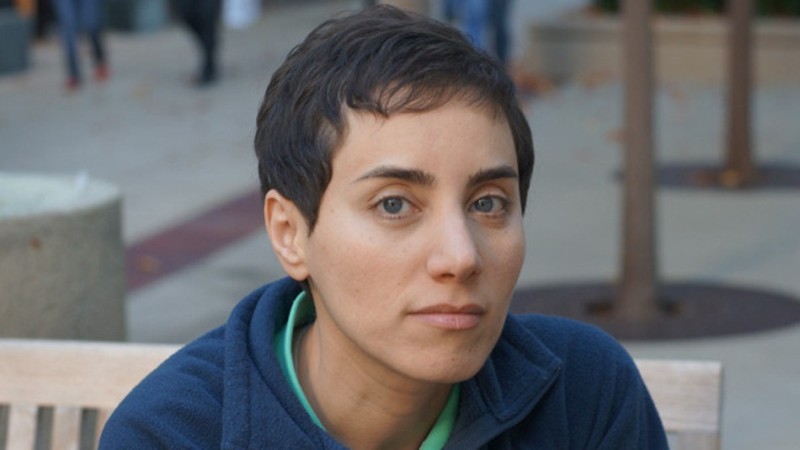Fields of Mathematics for the first time in history received a woman
 The 37-year-old professor of mathematics, Maryam Mirzakhani of Stanford University, became the first woman to receive the Fields Award, the most prestigious award in the field of mathematics.
The 37-year-old professor of mathematics, Maryam Mirzakhani of Stanford University, became the first woman to receive the Fields Award, the most prestigious award in the field of mathematics.The organizing committee recognized Mariam ’s extremely valuable contribution to geometry and dynamical systems. “Her work on Riemann surfaces and their modules combines several mathematical disciplines - Lobachevsky geometry, complex analysis, topology and dynamical systems - and, in turn, influenced all these disciplines. She received widespread fame for her first results in Lobachevsky geometry, ”the committee said in a statement.
The Fields Medal is awarded once every 4 years at each International Mathematical Congress to two, three or four young mathematicians who are not older than 40 years. Since the Nobel Prize is not awarded to mathematicians, the Fields Prize is often called the "Nobel Prize for Mathematicians."

Stanford University Mathematics Professor Mariam Mirzakhani
')
The Filds Prize differs from the Nobel in that it is awarded with an age limit of 40 years. This results from the fact that the award should be not only recognition of merits, but also stimulus for continuation of the further work.
Judging from the biography of Mirzahani , while studying at the Tehran school, the girl at first did not possess outstanding abilities in the field of mathematics. The teacher did not consider her talented - and she lost interest in this science. But next year, the new teacher was able to revive an interest in mathematics in the girl, and a year later she was considered a star.
In high school, Mariam wanted to prove that she could be better than the most talented boys (in Iran, there are still some women's schools — in this, and Mariam studied — and other “discrimination” towards the weaker sex). Before her, there had never been girls for the International Mathematical Olympiad in the country's national team, and young Mariam sat for textbooks for weeks to solve problems from the Olympiad and prove her suitability.

Four-year-old Mariam was not interested in mathematics at all. And then she was more interested in books about adventures: she wanted to read all the books in the library
In 1994, at the age of 17, Mariam with her friend Roy Beheshti (now a professor of mathematics at the University of Washington) became the first girls in the history of Iran to join the national team for the International Mathematical Olympiad. The team won the gold medal.
After moving to Harvard University, the girl practically did not understand what the teachers said, but was so passionate about the subject that she terrorized the teachers with questions. Needless to say, over time, she fully mastered the course, and when she turned on the imagination and offered the teacher to determine the correctness of the models described, he did not know what to say.
Even now, colleagues say, Mariam "gives the impression of a 17-year-old girl who is absolutely delighted with all the math that is happening around her."
Her greatest admiration was caused by hyperbolic planes (Lobachevsky planes) - strange figures with non-standard geometry and saddle-shaped forms. They could not be built in ordinary space, they existed only in an abstract form, where distances and angles are described by a set of equations. But Mariam's imagination painted them well.
In the early 2000s, many of the relatively simple properties of Lobachevsky’s planes, discovered 150 years ago, remained unknown. For example, what will happen to straight lines (geodesics) on such a plane? In her doctoral dissertation, Mariam elegantly answered this question, so her solution “as if asking for a textbook,” according to her colleagues.
After this enlightening dissertation, Mariam solved several more complex mathematical problems, including proposing a one-line solution for the problem, which was considered practically unsolvable.
The 37-year-old professor now continues his scientific career, conducting research in various fields in collaboration with several colleagues.
Other 2014 Fields Awards
Arthur Avila (Artur Avila), for his valuable contribution to the theory of dynamical systems, which changed the face of this field of science, with the help of the powerful idea of renormalization as a unifying principle.
Manjul Bhargava for developing bright new methods in the geometry of numbers that he applied to the computation of rings of small rank and to the boundaries of the average rank of elliptic curves.
Martin Hairer (Martin Hairer) for his outstanding contribution to the theory of stochastic equations with partial and, specifically, for the creation of the theory of regularity of structures for such equations.
Source: https://habr.com/ru/post/233565/
All Articles